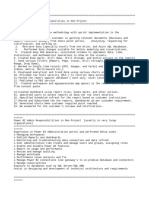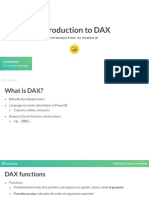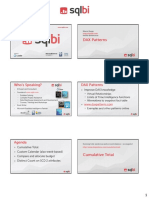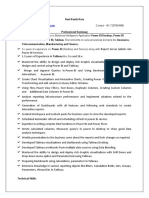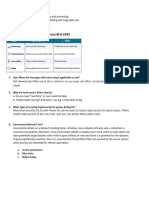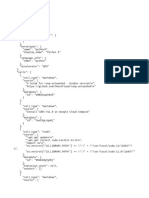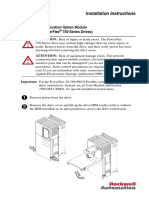0% found this document useful (0 votes)
532 views17 pagesAccenture Data Analyst Interview Questions
The document outlines SQL and Power BI interview questions for a Data Analyst position at Accenture, targeting candidates with 1-4 years of experience and a salary range of 9-13 LPA. It includes SQL queries for various tasks such as fetching employee salaries, analyzing customer orders, and calculating profit margins, as well as Power BI tasks related to creating dynamic reports and implementing Row-Level Security. Additionally, it features behavioral questions to assess candidates' problem-solving and collaboration skills in data analysis scenarios.
Uploaded by
anwar ansariCopyright
© © All Rights Reserved
We take content rights seriously. If you suspect this is your content, claim it here.
Available Formats
Download as PDF, TXT or read online on Scribd
0% found this document useful (0 votes)
532 views17 pagesAccenture Data Analyst Interview Questions
The document outlines SQL and Power BI interview questions for a Data Analyst position at Accenture, targeting candidates with 1-4 years of experience and a salary range of 9-13 LPA. It includes SQL queries for various tasks such as fetching employee salaries, analyzing customer orders, and calculating profit margins, as well as Power BI tasks related to creating dynamic reports and implementing Row-Level Security. Additionally, it features behavioral questions to assess candidates' problem-solving and collaboration skills in data analysis scenarios.
Uploaded by
anwar ansariCopyright
© © All Rights Reserved
We take content rights seriously. If you suspect this is your content, claim it here.
Available Formats
Download as PDF, TXT or read online on Scribd
/ 17







